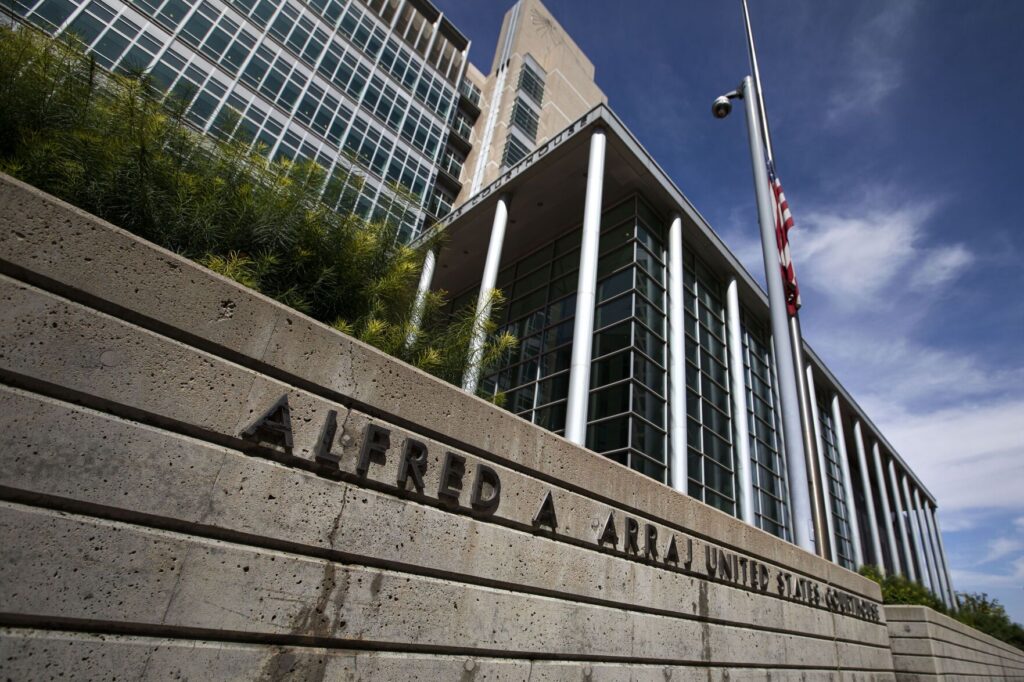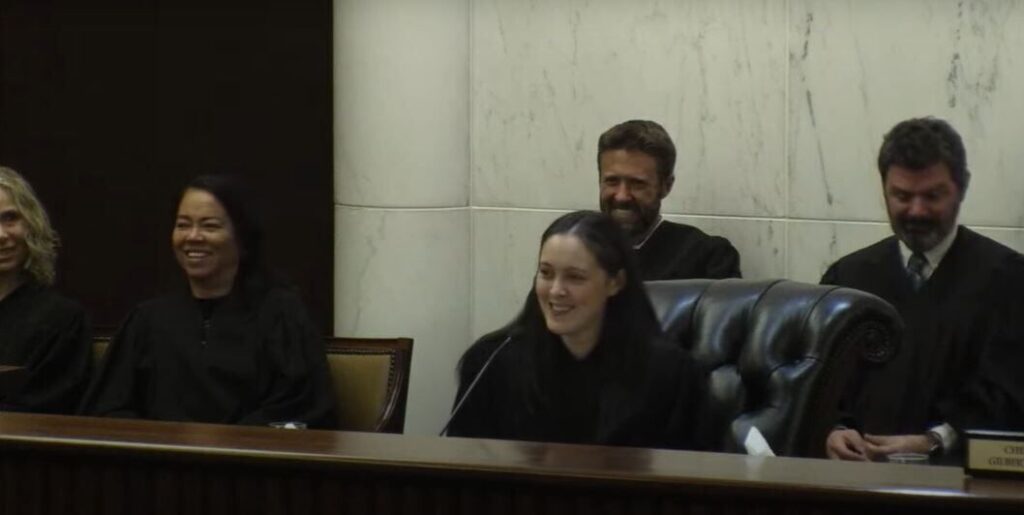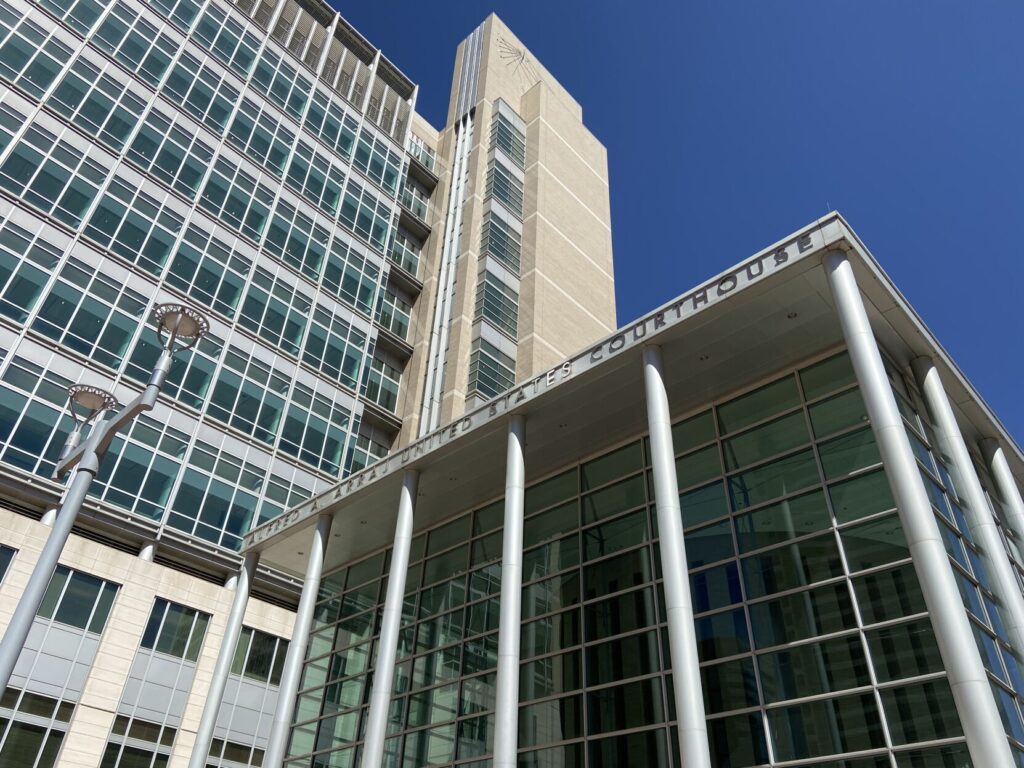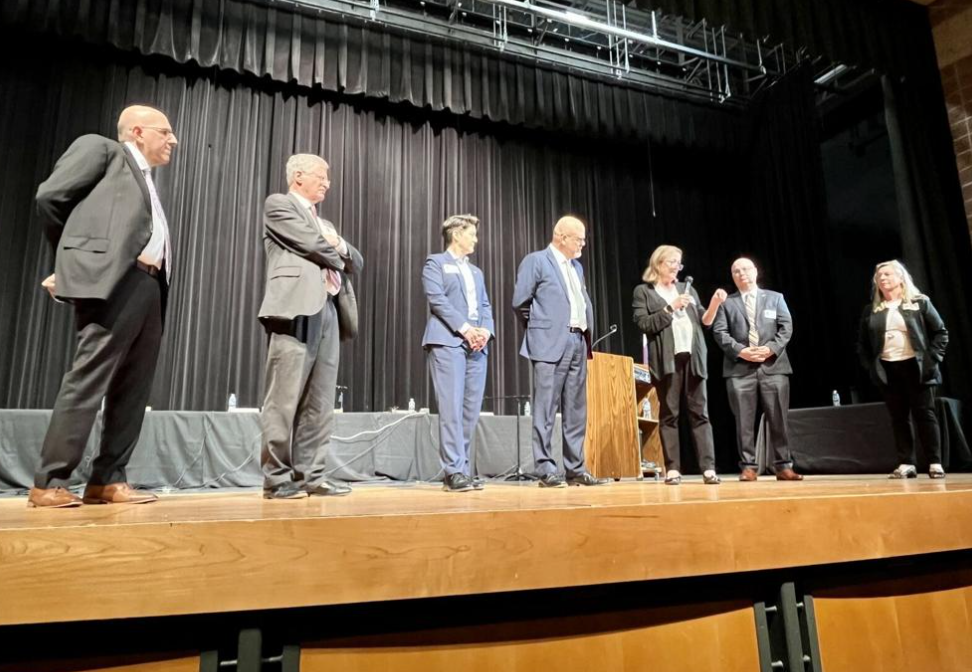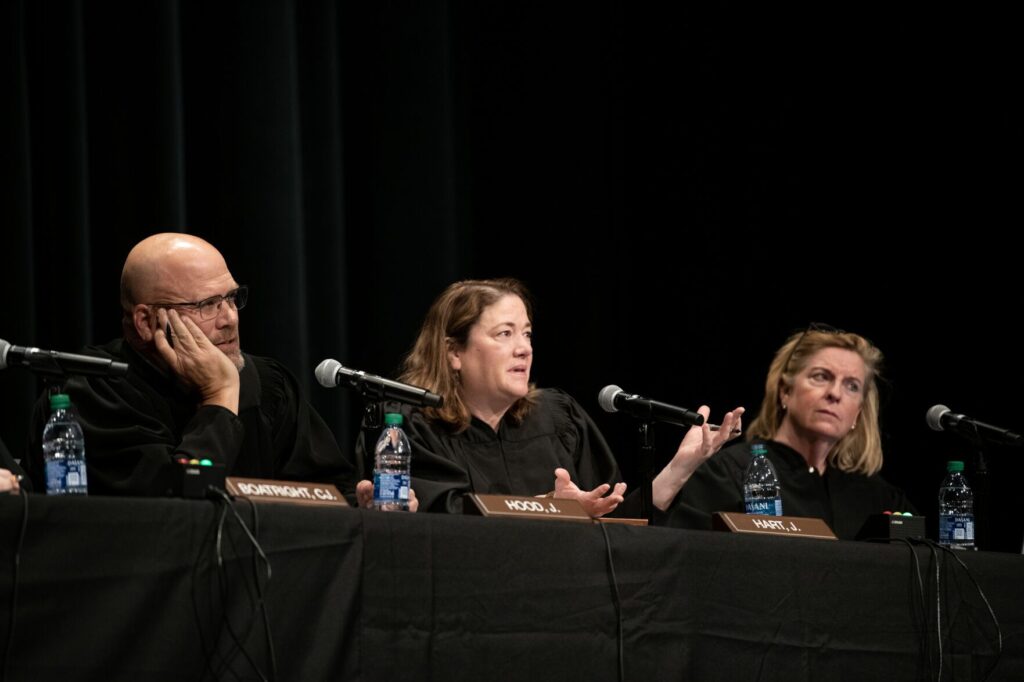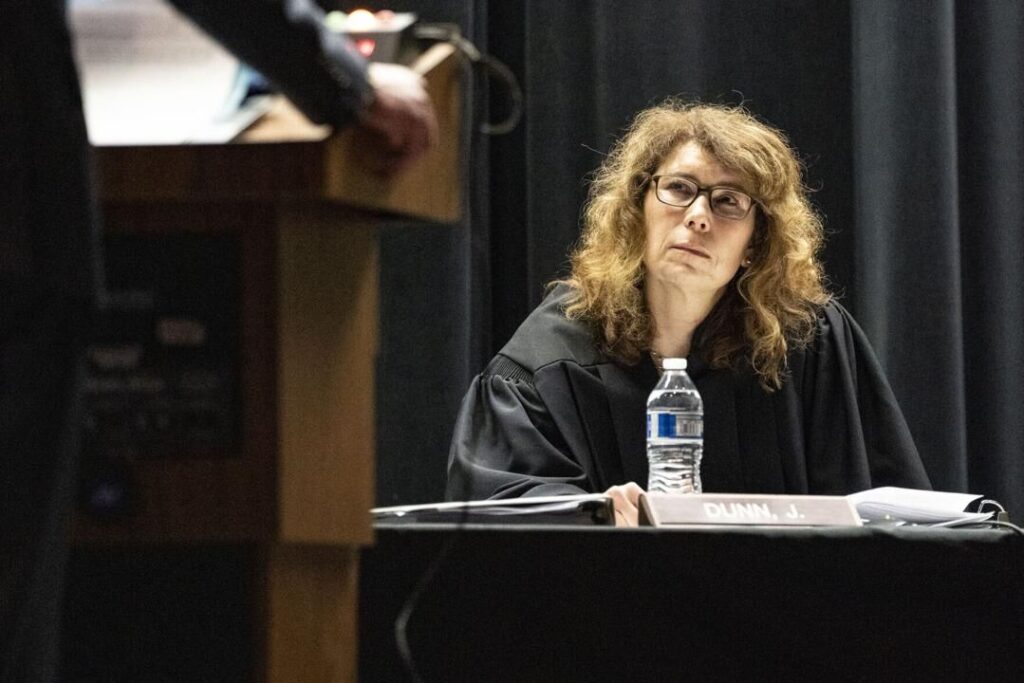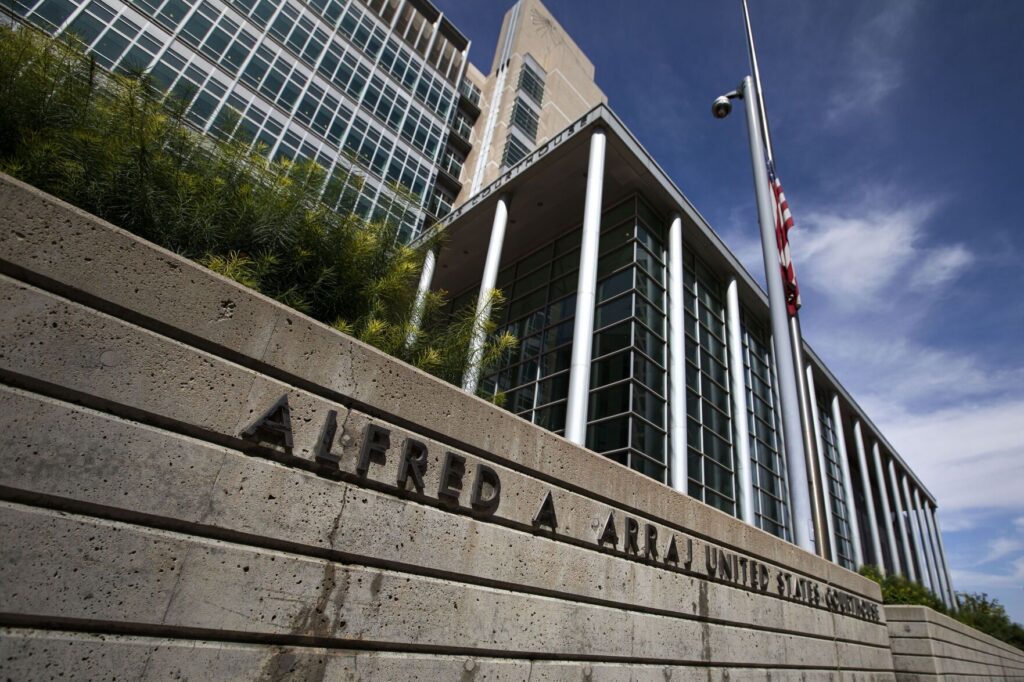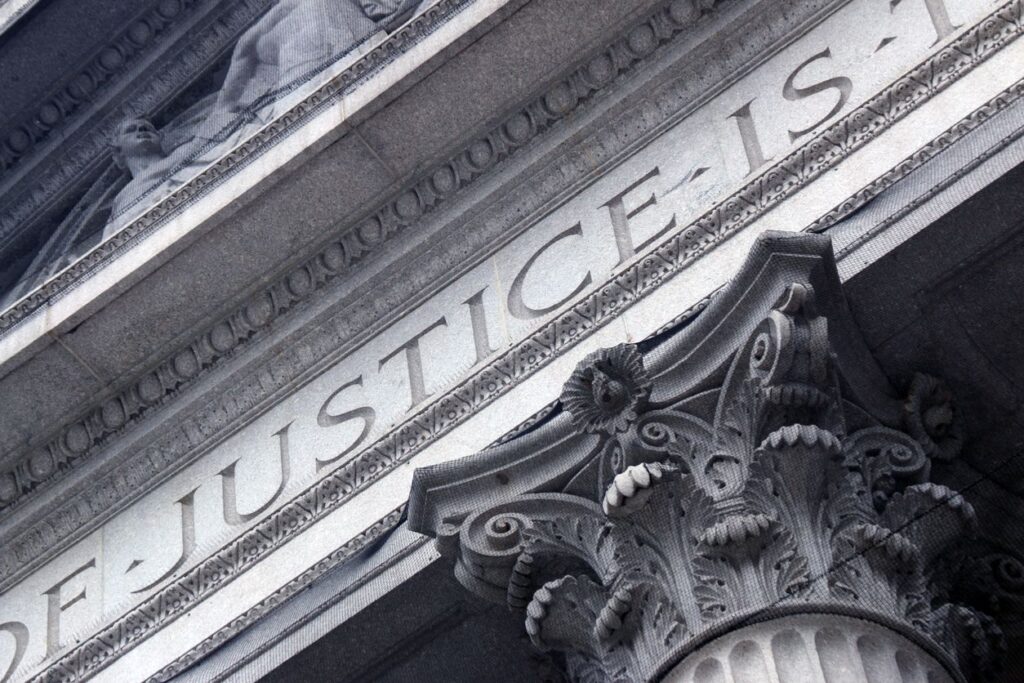‘Weird,’ ‘confusing,’ ‘disheartening’: Colorado Supreme Court under fire over racial bias proposal
Several members of a Colorado Supreme Court advisory committee aired their frustration last week after the justices announced they had reached consensus on a proposal to combat racial discrimination in jury selection — by substantially watering down the protections built into the original draft.
The Supreme Court took the unusual step of asking its Rules of Criminal Procedure Committee to respond to the justices’ heavy revisions to guidelines that would make it more difficult to remove, or strike, jurors of color from criminal trials for reasons that, while not explicitly racial, may still correlate with their race. The Supreme Court suddenly told the committee in late May that it had reached internal agreement after the original proposal sat for nearly 2.5 years without action.
The response from the rules committee — and specifically from defense attorneys and trial judges — was largely critical. Abraham Hutt, a defense lawyer who has served on the committee for three decades, called the Supreme Court’s counterproposal “disheartening and disappointing.”
“In all of that time I have not seen the Court respond as inappropriately to advice from its Committee as it has to the (racial bias) proposal,” he wrote.
“This was a chance for the judiciary to make a strong statement to the marginalized communities of Colorado that we acknowledge our historical errors and we are committed to repairing them. I fear in this respect we have failed,” added Weld County District Court Judge Vincente G. Vigil.
While two prosecutors also submitted comments and called attention to components they found confusing, other members of the committee raised a big-picture concern: The Supreme Court’s counterproposal fails to directly address juror strikes based on unconscious bias, which was the entire point of rule change.
“I continue to believe that this is an area that Colorado should address with a more robust amendment,” argued Denver County Court Judge Chelsea Malone.
Significant adjustments made
Nearly 40 years ago, the U.S. Supreme Court recognized in Batson v. Kentucky that purposeful racial discrimination in jury selection was unconstitutional. Now, if a party — typically the prosecution — strikes a juror of color, the defense may raise a “Batson challenge,” forcing the prosecutor to justify the dismissal with a “race-neutral” reason. The procedure applies to “peremptory strikes,” which do not require a justification for removing a juror unless there is a Batson challenge.
The original proposed change to criminal Rule 24 aimed to reduce less obvious forms of exclusion that are not explicitly due to a person’s race — for example, dismissing a juror of color for expressing distrust of police, living in a “high-crime neighborhood,” or having prior contact with law enforcement. The rule would have also created restrictions on removing jurors for their demeanor — like when an El Paso County prosecutor dismissed a Black woman who allegedly had a “sour look on her face.”
In February 2023, the state Supreme Court held a lengthy public hearing on the draft rule change. Prosecutors uniformly opposed the proposal, arguing it would be harder to dismiss jurors of color who exhibit bias against law enforcement. District attorney opposition had sunk an earlier effort by Democratic lawmakers to enact the change legislatively in 2022.
Eventually, Justice Carlos A. Samour Jr. informed the rules committee his court would not be taking action until it resolved three pending appeals all revolving around Batson challenges. The court released its decisions in all three cases last year, and signaled with its holdings that the justices harbored serious doubts about the rule change.
Then, in a May 29 letter to the rules committee, Samour confirmed as much.
“We recognize that what we came up with is different from your proposal,” Samour elaborated. He contended the justices are “restricted in what we can do” because of the U.S. Supreme Court’s Batson decision — even though the Washington Supreme Court adopted a similar racial discrimination rule nearly a decade ago.
Notably, the court’s counterproposal formally lays out the process judges and lawyers should go through during a Batson challenge. The original draft referenced reasons that were “presumptively invalid” for striking a juror of color, such as contact with police or distrust of law enforcement. Although the new proposal deems those “relevant circumstances,” the Supreme Court now suggests those justifications pose a problem only when they “might be disproportionately associated with race or ethnicity.”
Finally, rather than requiring demeanor-based strikes to have corroboration from the judge or the other side, corroboration of the juror’s behavior is only a factor to consider.
Logistical and philosophical concerns
On June 13, Court of Appeals Judge Elizabeth L. Harris, who chairs the criminal rules committee, forwarded Samour eight letters from members of the committee, representing more than half the committee’s membership. The majority were upset at the Supreme Court, with one attorney taking the extraordinary step of suggesting the justices did not actually believe the U.S. Supreme Court’s Batson precedent tied their hands.
“I respectfully disagree, and I doubt the Court feels it lacks the authority to promulgate rules of procedure with respect to the exercise of peremptory challenges that offer greater protections for prospective jurors than the floor established by Batson,” wrote Kevin McGreevy, a defense attorney and proponent of the original rule proposal. “A handful of states have now implemented changes to the exercise of peremptory challenges addressing implicit bias through a variety of means, and have done so without (U.S.) Supreme Court interference.”
McGreevy also pointed to another complication in the state Supreme Court’s consensus proposal. The justices envision trial judges should consider Batson challenges using “any relevant circumstances discussed in binding case law.”
“To freeze our circumstances as of binding case law in 2025 is… short-sighted? Weird?” McGreevy wrote.
“The proposal asked the court to move beyond Batson, which addresses only purposeful discrimination,” added public defender Karen Taylor. “Does this mean that, moving forward, litigants in Colorado state courts may not argue for an extension of the protections of the Equal Protection Clause to other factors or new considerations unless the United States Supreme Court addresses them first?”
Malone, the Denver County Court judge, anticipated the process of arguing whether jurors of color can or cannot be struck under binding case law would, in reality, “likely slow down the process of jury selection.”
Meanwhile, Kevin E. McReynolds of the First Judicial District Attorney’s Office noted a “confusing” statement in the counterproposal that judges need not find purposeful discrimination is happening in order to uphold a Batson challenge. Yet, he observed, Batson itself pertains only to purposeful discrimination.
First Assistant Attorney General John T. Lee also echoed several other commenters in pointing out Batson challenges can apply to characteristics other than race, but it was unclear whether the Supreme Court intended to write those protections into the rule, as well.
Vigil, the Weld County judge, summed up a common theme from the responses in suggesting the policy the Supreme Court settled upon bore more resemblance to the 40-year-old Batson decision than the committee’s vision for a new landscape.
The “discussion about revising Rule 24 was never intended to clarify or explain Batson,” he wrote. “Rather, it was a desire for Colorado to express that equity considerations are a priority in this State, that we as a State acknowledge the complex and shameful history of racism in our criminal justice system, and that we, as a judiciary, acknowledge that we should take the first steps forward in repairing the damage that oppression causes.”
Colorado Politics Must-Reads:





